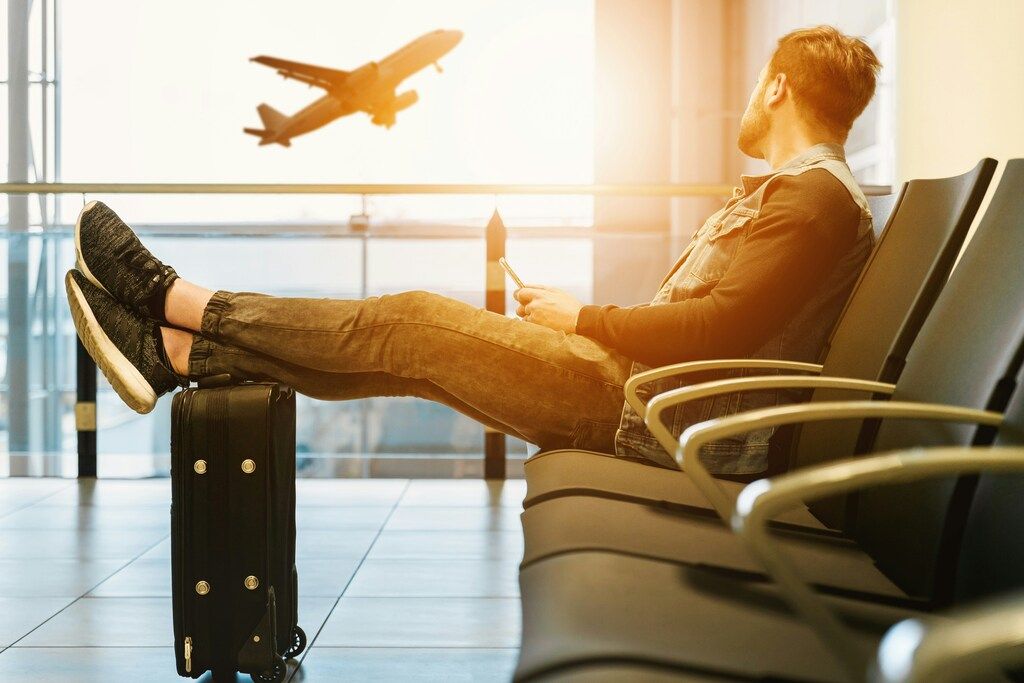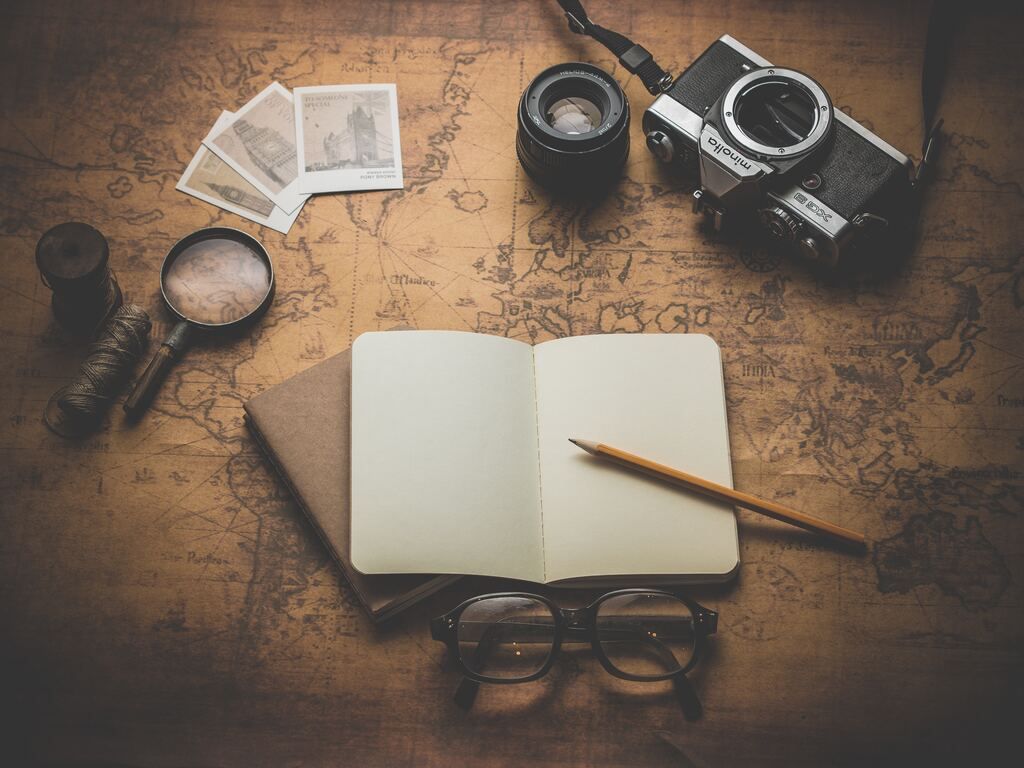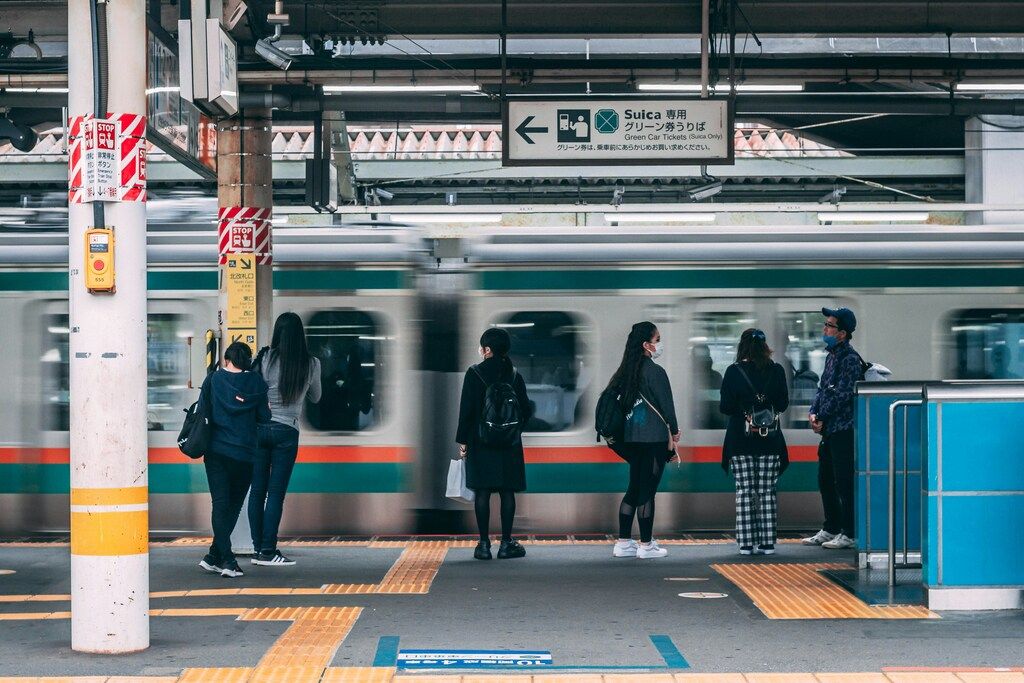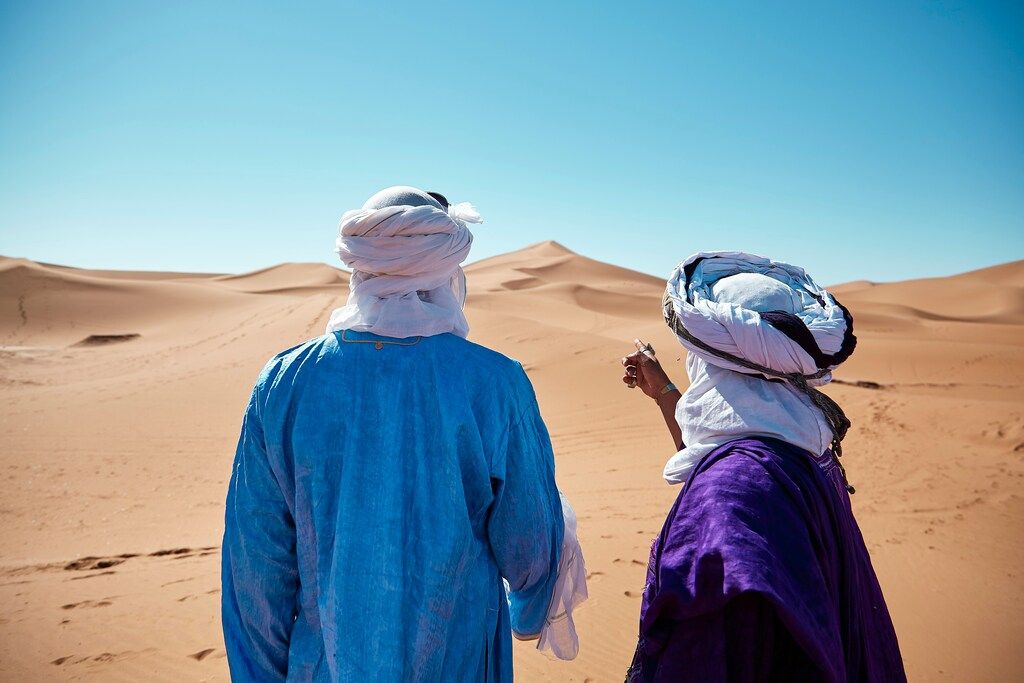

Ah, Morocco. A country that promises cinematic desert sunsets, maze-like medinas, rainbow spice markets—and, if you’re not careful, a suitcase full of the wrong clothes.
Packing for Morocco requires balancing cultural respect, comfort, and style. Due to the country’s Islamic traditions, diverse landscapes, and shifting weather, your usual holiday wardrobe may not be suitable.
If you’re wondering what to wear in Morocco, this guide provides a comprehensive packing list covering what to wear in Morocco’s cities, deserts, and mosques, ensuring you are prepared, comfortable, and respectful throughout your journey. Let’s dive in, headscarves first.
Understanding the moroccan dress code: culture and climate first
Before you start rolling up kaftans and counting how many pairs of linen trousers you own, you need to grasp the “why” behind Moroccan dress culture. Morocco is a Muslim-majority country where modesty is a key aspect of public life. While not as strict as some other nations, dressing respectfully is important, especially outside major tourist hubs. The goal is not to hide, but to show respect by covering key areas.
- Modesty: The primary guideline is to cover your knees, shoulders, and cleavage. This is especially crucial in rural areas and religious sites.
- Weather: The climate varies dramatically.
- Autumn/Winter (October, November, or December) Days are sunny but nights are cool. Pack layers, including lightweight long sleeves, cotton shirts, and a jacket.
- Summer: The heat can be intense, especially inland. Light, breathable fabrics like cotton, rayon, and linen are essential.
Quick Tips on what to avoid:
- Don’t pack spaghetti straps or crop tops unless you’re layering under something else.
- Leave the ultra-short shorts or mini-skirts for other places.
- Avoid clingy, see-through, or overtly athletic wear in public.
You’re not dressing to blend in—you’re dressing to respect. And trust us, locals notice the effort.
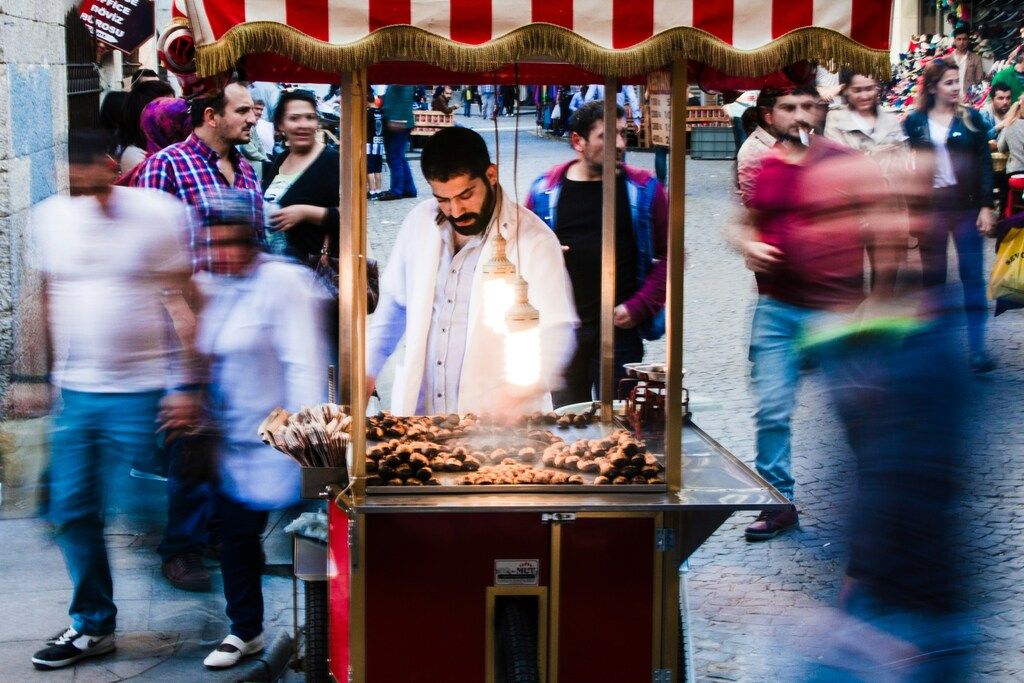
What to wear for women: balancing style and modesty
Dressing respectfully in Morocco does not mean sacrificing style. The key is to choose outfits that are both fashionable and culturally appropriate.
The Golden Rule: opt for loose, flowing clothing over figure-hugging items.
- Recommended Items:
- Maxi dresses and long skirts: These are perfect for staying cool and covered.
- Harem pants or wide-legged trousers: Both stylish and comfortable for walking.
- Light cotton shirts or tunics: Ensure they have sleeves to cover the shoulders.
- A large, lightweight scarf: This is a versatile must-have. Use it for sun protection, as a head covering for mosques, or for extra coverage in traditional areas.
- Cities vs. Countryside: In cosmopolitan cities like Marrakech, you will see more varied fashion. However, a “modest cosmopolitan” approach is still best to avoid unwanted attention.
- Layers: Always pack layers. A denim jacket, cardigan, or light jumper is useful for cool evenings, even in summer.
What to wear for men: respectful and practical choices
Sorry gentlemen, Men also have dress code guidelines to follow for both comfort and cultural respect.
- Rule #1: Cover Your Shoulders. Avoid tank tops. Opt for short-sleeved T-shirts or polo shirts instead.
- Trousers: Long trousers like jeans, chinos, or lightweight cotton pants are the best choice. While knee-length shorts are sometimes seen on tourists in cities, very short shorts are not appropriate.
- Religious Sites: When visiting mosques or sacred spaces, both shoulders and knees must be covered without exception.
- Footwear: Pack comfortable closed-toe shoes or supportive sandals suitable for walking on uneven, dusty streets.
- Layers: A jumper or light jacket is essential for cooler evenings, especially during the shoulder seasons.
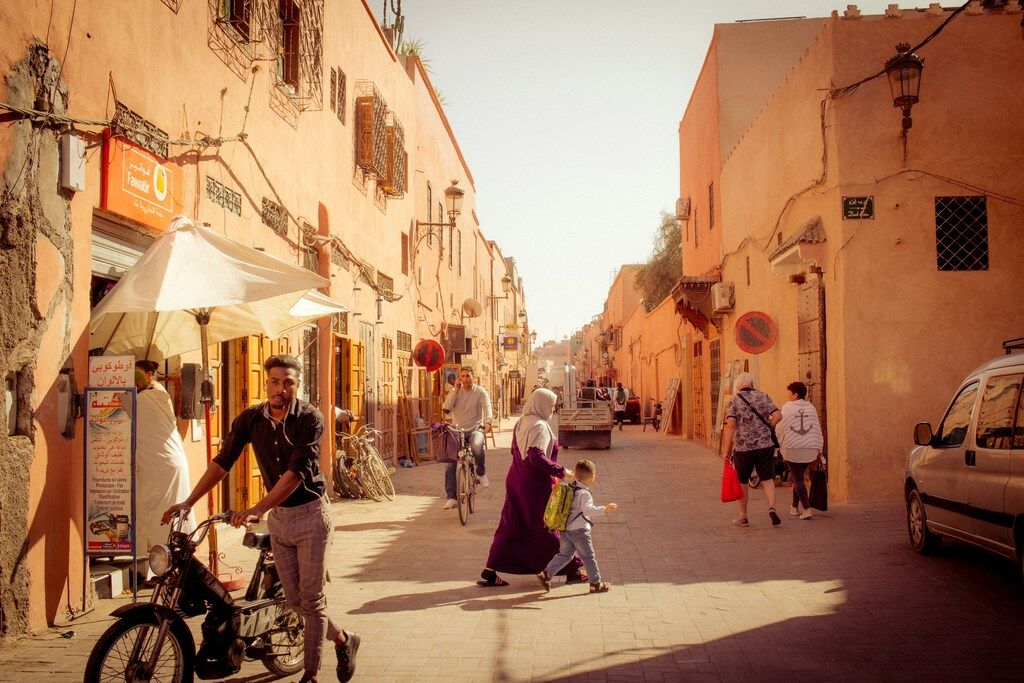
Dressing for cities and souks: navigating the urban maze
City attire in Morocco should be practical, respectful, and sturdy. Moroccan cities like Marrakech, Fes, and Essaouira are vibrant but chaotic, colourful but dusty.
- Footwear: Comfortable walking shoes are non-negotiable. Cobbled streets and long walks through the souks require cushioned, closed-toe shoes or supportive sandals. Leave flip-flops for the riad.
- Clothing: Choose neutral tones and relaxed fits. Avoid flashy clothing, loud patterns, or prominent logos that can draw unnecessary attention. Linen jumpsuits, cotton tunics, and maxi skirts are ideal.
- Sun Protection: This is crucial. A hat, sunglasses, and a light scarf are daily essentials. Even with sunscreen, keeping shoulders covered helps prevent sunburn.
Bonus tip: If you’re going to photograph yourself buying spices or riding a tuk-tuk try to look like you belong. Locals appreciate the effort, and your photos will age better than any neon tank top ever could.
Desert adventures and mountain treks: packing for extremes
The Sahara Desert and the High Atlas Mountains present extreme conditions, from scorching sun to freezing nights. Smart layering is key.
Essentials for desert and mountain trips:
- Lightweight, breathable clothing: Long-sleeved shirts and airy trousers protect from sun and wind.
- Sturdy, closed-toe footwear: Closed-toe shoes or hiking sandals with good grip are necessary.
- Insulating layers for night: A fleece jacket, thermal tops, and a windbreaker are vital for cold desert nights, when temperatures can drop below 10°C, even after daytime highs in the 30s.
- Sun protection: A wide-brimmed hat, UV-rated sunglasses, and high-factor sunscreen are essential. There’s little shade in the dunes or mountains.
- Multipurpose scarf: It doubles as protection from sun, wind, and dust—and works as a makeshift pillow on long rides.
Essentials for treks in the Atlas Mountains:
- Hiking boots with ankle support
- Moisture-wicking layers, including thermal tops
- Waterproof outer layer, especially in spring or autumn
- Wool socks, hat, and gloves for higher altitudes
For more seasonal details, check a guide on the best time to visit Morocco for seasonal insights.
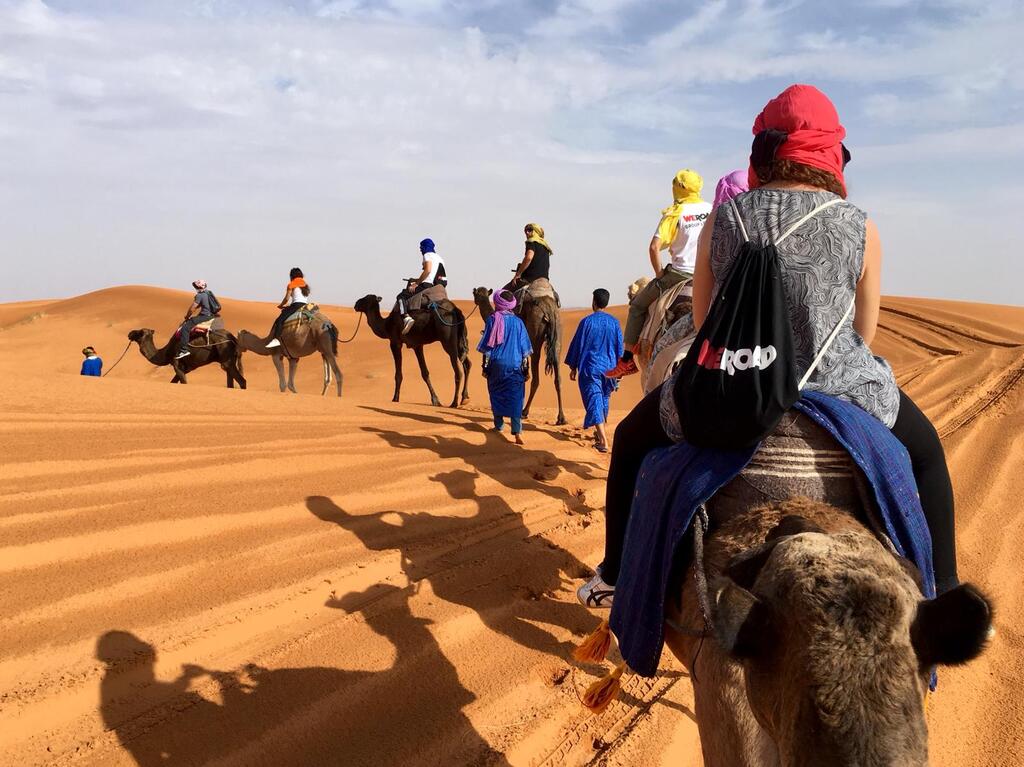
Dressing for Mosques and religious sites: sacred spaces, sacred dress
While most mosques are not open to non-Muslims, sites like the Hassan II Mosque in Casablanca welcome visitors. Here, the dress code is strict and non-negotiable.
Dress code for sacred spaces (men & women):
- Shoulders and knees must be covered.
- Clothing must not be tight or revealing.
- Women should carry a scarf to cover their hair upon entry.
Rules of conduct:
- Don’t enter without proper coverage.
- Don’t eat, smoke, or talk loudly inside or nearby.
- Don’t point your feet toward a place of prayer.
- Don’t assume you’re welcome—always ask if in doubt.
Respect here isn’t performative—it’s practical and appreciated.
Essential accessories and footwear: completing your Moroccan wardrobe
The right accessories enhance both comfort and preparedness.
Here’s a roundup of what to pack for Morocco that often gets forgotten:
- Sun Protection: Sunglasses and a wide-brimmed hat.
- Hydration: A reusable, insulated water bottle.
- Bag: A lightweight backpack or crossbody bag for day trips.
- Scarf/Pashmina: For sun, warmth, or covering up.
- Security: A hidden money belt for crowded souks.
- Tech: A power bank and a universal adapter (Morocco uses European-style outlets).
For footwear, comfort trumps fashion. The romantic idea of strolling through Marrakech in embellished sandals quickly fades when you’ve clocked 15,000 steps and stepped in a puddle of questionable origin.
Essential footwear:
- Comfortable walking shoes: For long days of exploring.
- Supportive sandals: For lighter walking days.
- Avoid: Flimsy flip-flops, which are not suitable for the streets
These items will prepare you to explore all of what to see in Morocco.

Dress for an authentic moroccan journey
Packing thoughtfully is a form of respect that enhances your travel experience in Morocco. By dressing appropriately, you can stay comfortable, feel confident, and connect more deeply with the local culture.
Summary of what to wear:
- Cities: Breathable fabrics, modest coverage, and sun protection.
- Desert & Mountains: Functional layers for extreme temperatures and sturdy shoes.
- Sacred Spaces: The most conservative attire—shoulders and knees covered, with a headscarf for women.
- Accessories: Prioritize comfort, hydration, and security.
Ready to experience it for yourself? Join our Morocco Express 5-day group tour or discover Morocco’s charm with our Fez & Rabat organized group trip.

